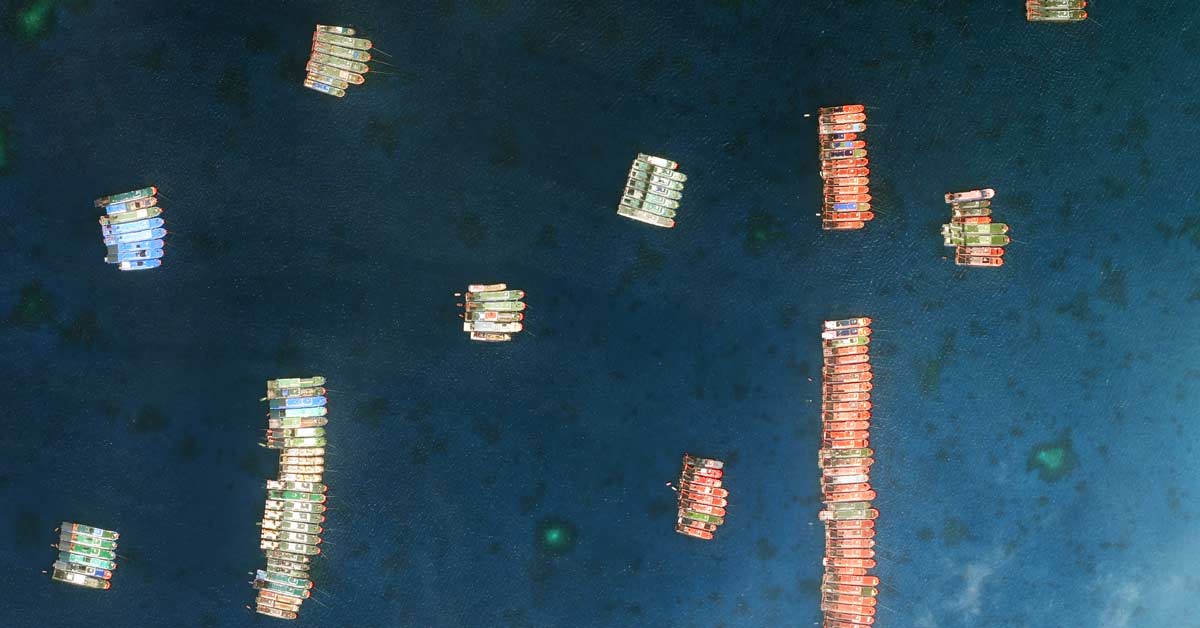The Philippines’ air force has been conducting daily aerial patrols over Chinese fishing vessels moored near a disputed reef, the country’s defence chief said, as he repeated a call to Beijing for their withdrawal from the area.
The diplomatic row was touched off earlier this month when some 220 boats were first spotted at the boomerang-shaped Whitsun Reef, west of Palawan Island.
The Philippines ordered China to recall the vessels, describing their presence as an incursion into its sovereign territory. But China, which claims almost the entirety of the South China Sea (SCS), said the flotilla is made up of fishing vessels sheltering from bad weather.
The Philippine foreign ministry has filed a diplomatic protest, while several countries – including the United States (US) and Australia – have expressed concern over renewed tensions in the region.
Philippine navy and coast guard ships have been deployed to the area to monitor the situation, in addition to the aerial patrols, according to defence secretary, Delfin Lorenzana.
“We are ready to defend our national sovereignty and protect the marine resources of the Philippines,” Lorenzana said late on Saturday.
He added there will be an “increased presence” of navy and coast guard ships patrolling Philippine waters.
The resource-rich South China Sea is claimed by several countries, including the Philippines and China.
Beijing often invokes its so-called nine-dash line to justify its claimed historic rights over most of it, and has ignored a 2016 international tribunal decision that declared this assertion as being without basis.
On Thursday, spokesman Harry Roque said Philippine President Rodrigo Duterte had expressed concern over the presence of the fishing vessels to the Chinese ambassador in Manila.
Duterte is being pressed to take a stronger stand against the Chinese government in the face of a separate revelation of “significant construction activity” by China at an artificial island built on top of Subi Reef, also within the Philippines’ exclusive economic zone (EEZ).
“The volume of changes is significant, and may indicate the early phases of major construction on Subi Reef,” according to Simularity, a US-based technology firm that studied satellite images of the South China Sea.
Duterte has fostered warmer ties with China since taking office in 2016 in exchange for greater economic cooperation with its superpower neighbour.
But the shift has failed to stem Chinese ambitions in the South China Sea, or unlock much of the billions of dollars of promised trade and loans. – AL Jazeera
Related Articles:
